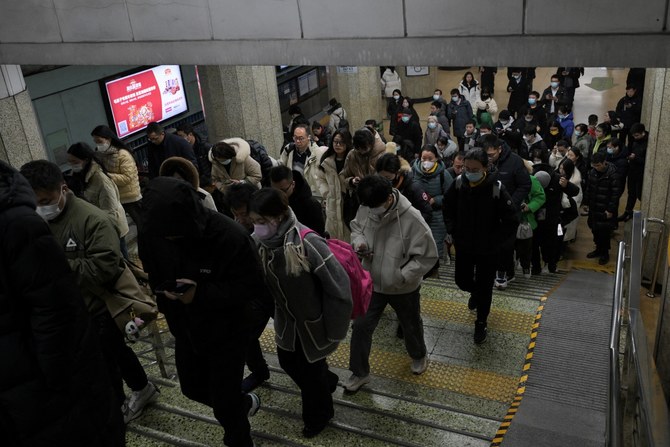
- ARAB NEWS
- 02 Jul 2025

In October 2023, the joint statement issued after the Association of Southeast Asian Nations-Gulf Cooperation Council summit in Riyadh vowed to explore cooperation on key partnership priorities on both sides. The idea was to strengthen regional market integration, sustainability and decarbonization, digital transformation and inclusivity, and people-to-people ties. Going unmentioned was how Asia’s aging population and how it can impact this relationship adds another dimension to this already comprehensive equation.
As the tides of demographic change sweep across Asia, the implications for the Middle East are profound and multifaceted. With Asia’s population aging rapidly, the dynamics of labor markets, economic ties and investment opportunities between the two regions are poised for transformation. Countries like China and South Korea stand as stark examples of this trend, with China’s birth rate plummeting by 81 percent and South Korea’s by an astonishing 86 percent from 1950 to 2021, underscoring the magnitude of the demographic transformation.
In its “World Population Ageing 2023” report, the UN Department of Economic and Social Affairs underscores the significance of demographic transition in shaping nations’ age structures. As countries progress through distinct stages of population growth and dependency shifts, a new era of challenges and opportunities emerges. Notably, the birth rate in Asia is about 15 births per 1,000 people, reflecting a gradual decline that underscores the region’s transition toward an aging population profile.
The Middle East, long a hub for expatriate labor, stands on the cusp of potential shifts in workforce dynamics
Ehtesham Shahid
Numerous factors converge to drive this decline, reflecting the complex web of socioeconomic dynamics that shape societal norms and aspirations. Rapid socioeconomic development, marked by expanded education and career opportunities for women, has catalyzed shifts in family dynamics, leading to delayed family starting and a preference for smaller families. Urbanization further amplifies these trends, fostering smaller living spaces and prioritizing career pursuits over traditional family life.
The evolving demographic landscape in Asia sets the stage for a redefined global labor market. The Middle East, long a hub for expatriate labor, stands on the cusp of potential shifts in workforce dynamics as Asia grapples with this shrinking working-age population. The question remains: Which scenario is more plausible? Will the Middle East emerge as a magnet for skilled Asian workers seeking new opportunities or will Middle Eastern investors seize the chance to tap into Asia’s changing demographic dynamics for mutual benefit?
The Asia-Middle East economic relationship is also poised to undergo a metamorphosis. While challenges may arise from a dwindling pool of young workers in Asia, opportunities for collaboration, knowledge exchange and investment abound for Middle Eastern investors eyeing Asia’s evolving demographics. As Asia’s domestic markets adapt to an aging populace, there is a potential for transformation for goods and services demand, offering new avenues for trade with the Middle East. Increased demand for healthcare products and services in Asia, once again driven by an aging population, could unlock fresh markets for Middle Eastern businesses, fostering deeper economic ties.
This scenario understandably impacts both sides. An International Labour Organization study on social protection for migrant workers says that, while the GCC countries currently have young populations, the demographic ratios are shifting toward an aging population and they depend more heavily on migrants than any other region in the world. “Strengthening the provisions for both nationals and migrants working in the private sector will be critical for attracting migrant workers in an increasingly competitive global market, as well as addressing informality, reducing labor market distortions and increasing citizens’ participation in the private sector labor market,” says the report.
In this era of demographic flux, the dialogue between aging Asia and the Middle East takes on new dimensions
Ehtesham Shahid
Moreover, labor markets in the GCC are highly segregated, with nationals working mainly in public sector jobs while migrant workers dominate the private sector. The International Labour Organization report cites the most recent data to show that, in most GCC countries, non-nationals make up at least 80 percent of the private sector workforce.
In other words, embracing the opportunities and challenges of aging populations, Asia and the Middle East stand poised to chart a path toward a future defined by cooperation, growth and inclusivity in a world shaped by demographic diversity. For instance, exchanging knowledge, best practices and innovations in geriatric care could foster a deeper understanding and collaboration between the regions, strengthening ties and fostering a shared purpose in addressing the challenges of aging populations.
The Abu Dhabi Dialogue has been a step in this direction. A voluntary and nonbinding intergovernmental consultative process, it has engaged seven countries of labor destination (Bahrain, Kuwait, Malaysia, Oman, Qatar, Saudi Arabia and the UAE) and 11 countries of origin (Afghanistan, Bangladesh, China, India, Indonesia, Nepal, Pakistan, the Philippines, Sri Lanka, Thailand and Vietnam). Its regular observers include the International Organization for Migration, the International Labour Organization, the private sector and civil society.
In this era of demographic flux, the dialogue between aging Asia and the Middle East takes on new dimensions, inviting reflection, collaboration and innovation to chart a course toward a future where demographic diversity is embraced as a source of strength and resilience in an ever-changing world. How Asia and the Middle East adapt to these demographic winds of change will define their economic landscapes and pave the way for deeper collaboration and engagement in an increasingly interconnected world.